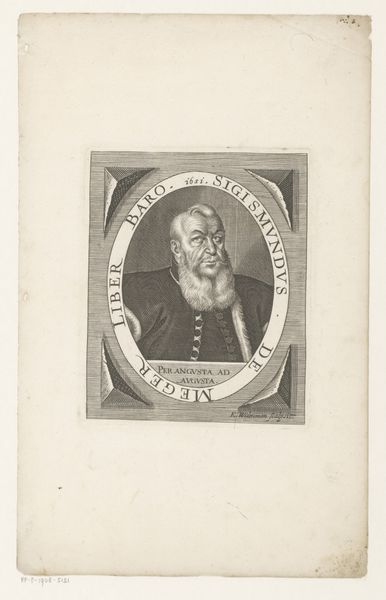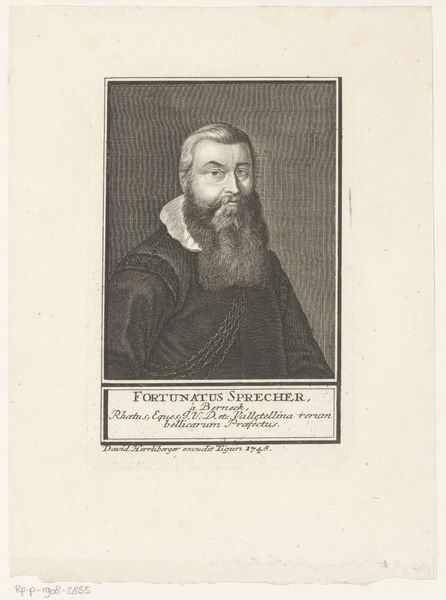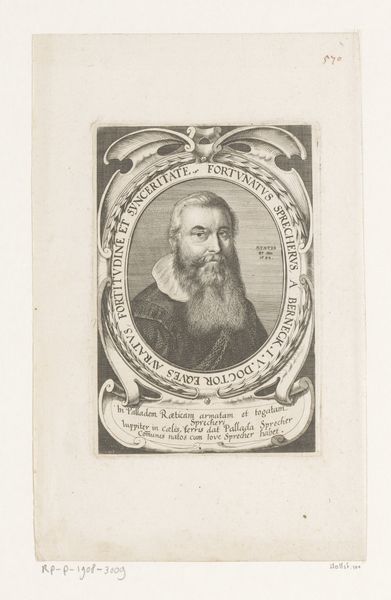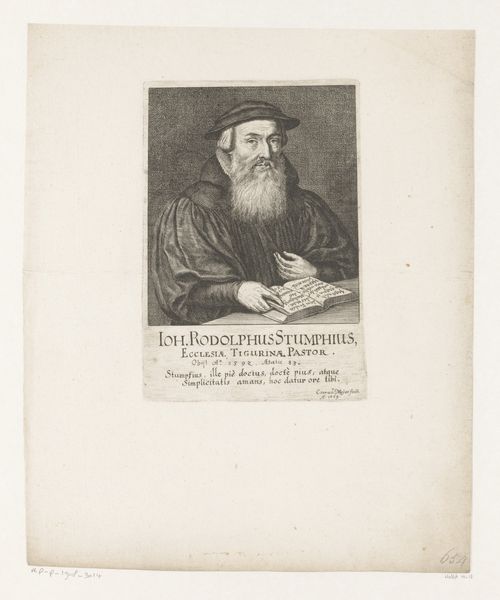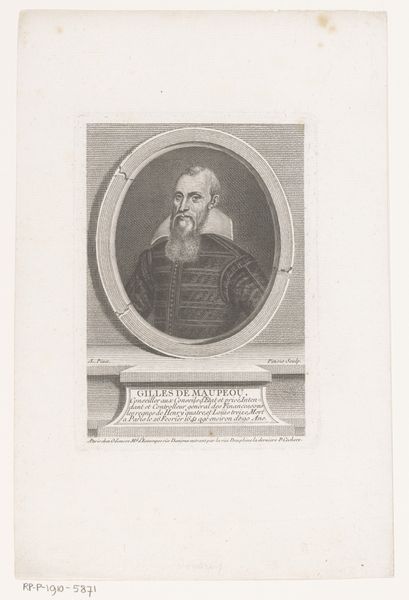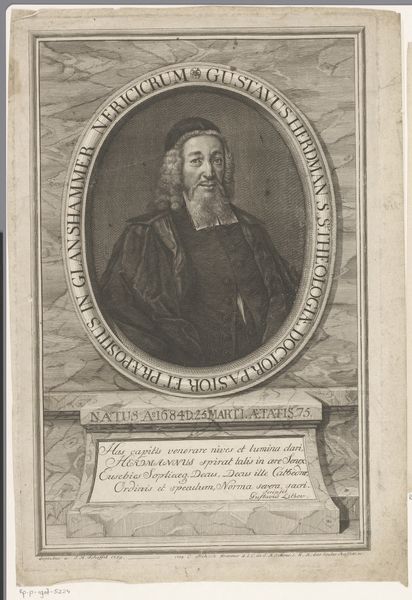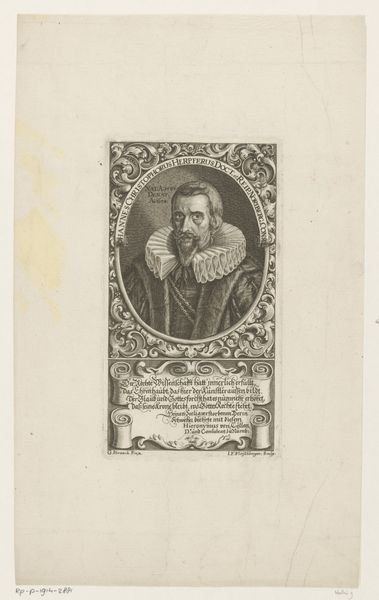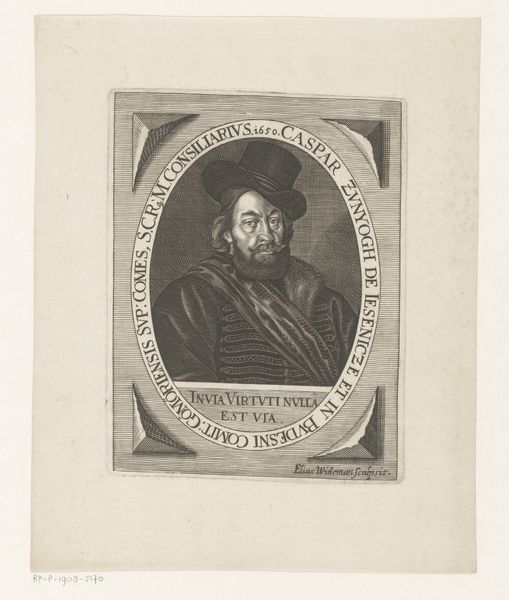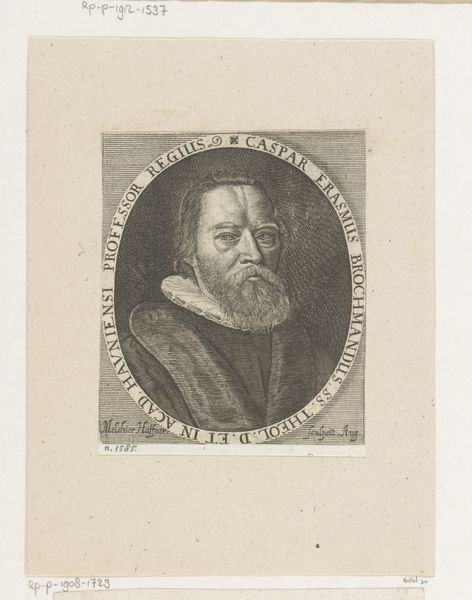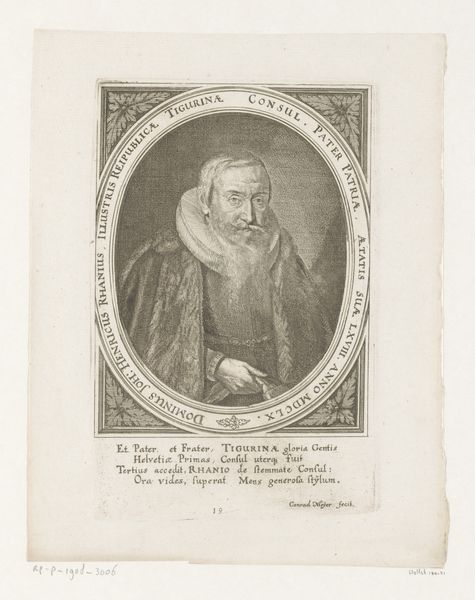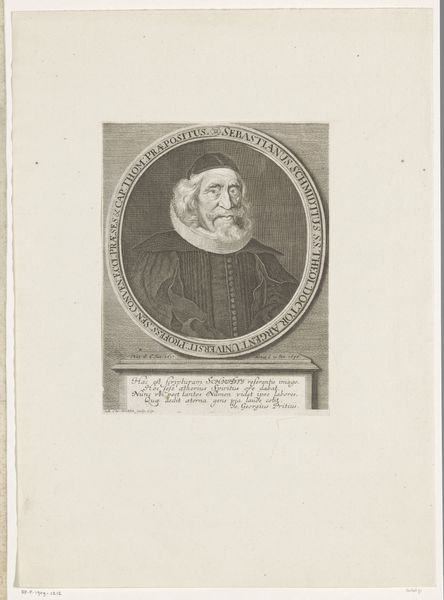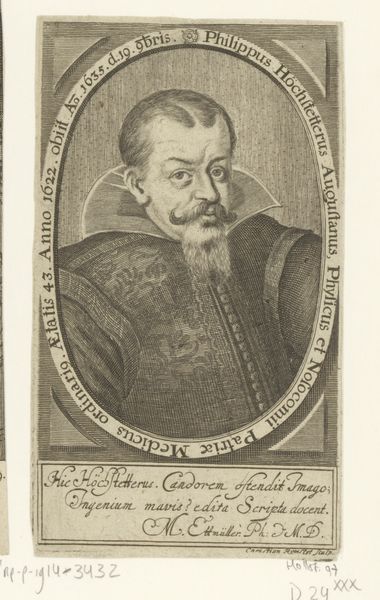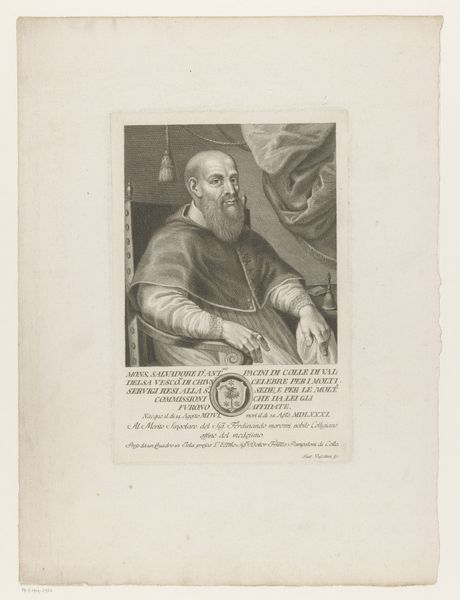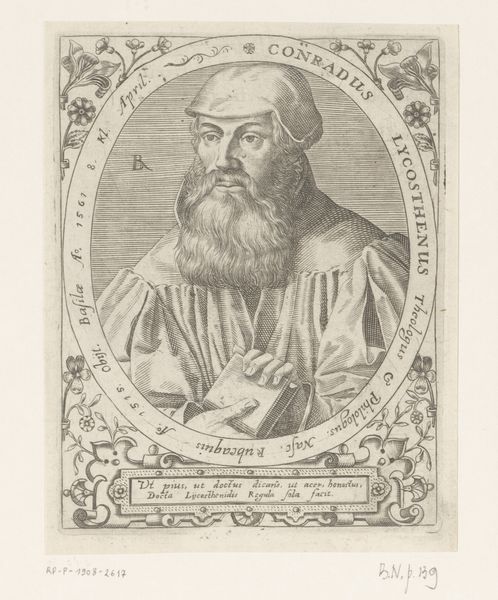
print, engraving
#
portrait
#
baroque
# print
#
old engraving style
#
figuration
#
classicism
#
line
#
history-painting
#
academic-art
#
engraving
Dimensions: height 244 mm, width 164 mm
Copyright: Rijks Museum: Open Domain
Curator: This is Theodor Matham's portrait of Cardinal Vincenzo Giustiniani, an engraving dating from sometime between 1636 and 1647. Editor: Oh, he has such kind eyes, doesn't he? Though I wouldn't want to meet him in a dark alley. That's some serious beard-power! It really commands respect, or perhaps obedience. Curator: Well, Giustiniani was a very influential figure. As a cardinal, he held significant power within the Catholic Church. His family was also a major patron of the arts during the Baroque period, with strong ties to intellectual circles. So Matham's print participates in a wider dissemination of Giustiniani's image and authority. Editor: So, a Baroque era influencer then, getting his brand out there? The line work is exquisite, though! It feels almost photographic, despite obviously being made with meticulous engraving. Look at the detail in the robes—it's quite something, even down to the texture. It does make you think about what it meant to reproduce an image like this before, well, Instagram. Curator: Exactly! Prints like this were crucial for spreading visual information and reinforcing social hierarchies. By circulating the cardinal’s likeness, Matham contributed to the construction and maintenance of Giustiniani's public persona, solidifying his legacy, and the family name as supporters of the arts and sciences. These were tools for consolidating influence and curating legacies in Early Modern Europe. Editor: Makes you wonder what Giustiniani thought of it. Did he see it as a faithful representation? Or a strategic augmentation? There is a sort of... stoicism radiating from him. You imagine a man not easily ruffled, secure in himself and his power. Also, it is quite funny that despite being an engraving this gives you a very intimate snapshot of what must've been the real person, really neat! Curator: He undoubtedly understood the power of imagery. These portraits often followed established conventions, but they also served specific purposes in promoting one’s image. Looking at it today offers a valuable window into understanding that era's visual and social culture, a period of both devout religious fervor and burgeoning intellectual freedom. Editor: A window indeed. Makes you appreciate the sheer artistry, even beyond the historical context. Curator: Indeed. Seeing these images in the Rijksmuseum lets you examine how art was so actively used to cement personal and political power in this period of great upheaval across Europe.
Comments
No comments
Be the first to comment and join the conversation on the ultimate creative platform.
